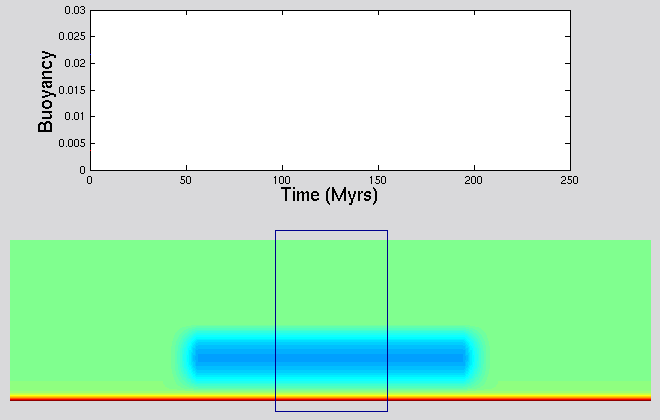
Моделирование плюмов

Graduate student Eh Tan, working with Michael Gurnis, have recently discovered a plausible mechanism of generating superplumes at the core mantle boundary. This animation shows the evolution of an ancient slab which is resting at the core mantle boundary for millions of years. In this animation, the yellow to red regions are hot (and have a low effective viscosity) while the blue region (the ancient slab) is cold and has a high viscosity. Tan and Gurnis have discovered that a cold slab, which is both negatively buoyant and relatively strong, will tend to trap hot mantle beneath it. Notice how rapidly plume formation occurs in the slab free regions. However, beneath the cold slab, heat builds up for nearly 150 million years such that the plume which finally 'erupts' below the slab is substantially larger than the plumes which form from normal hot thermal boundary layers.
The box delineated by the black lines shows the region within which we integrate the negative bouyancy of the slab and the buoyancy of the developing plume. Watch the evolution of the buoyancy within the slab (blue) and that within the plume (red) in the evolving diagram above the convection picture
